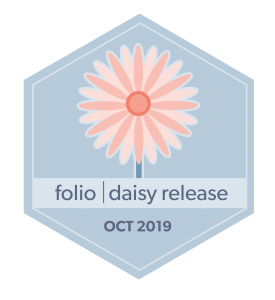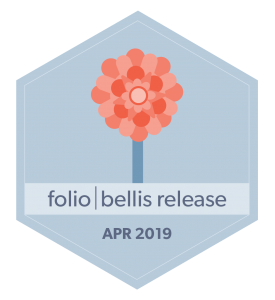Since my last post about our integrated library system (ILS), there’s been a few changes. First, my team is now the Library Systems and Integration Support Department. We’ve also added three business analysts to our team and we have a developer coming on board this summer. We continue to work on FOLIO as a replacement for our current ILS. So what work are we doing on FOLIO?
FOLIO is a community-sourced product. There are currently more than 30 institutions, over a dozen developer organizations, and vendors such as EBSCO and IndexData involved. The members of the community come together in Special Interest Groups (SIGs). The SIGs discuss what functionality and data is needed, write the user stories, and develop workflows so the library staff will be able to do their tasks. There are ten main SIGs, an Implementation Group, and Product and Technical Councils. Here at Duke, we have staff from all over the libraries involved in the SIGs. They speak up to be sure the product will work for Duke Libraries.
Features
The institutions planning to implement FOLIO in Summer 2020 spent April ranking 468 open features. They needed to choose whether the feature was needed at the time the institution planned to go live, or if they could wait for the feature to be added (one quarter later or one year later). Duke voted for 62% of the features be available at the time we go live with FOLIO. These features include things like default reports, user experience enhancements, and more detailed permission settings, to name a few.
Gaps
After the feature prioritization was complete, we conducted a gap analysis. The gap analysis required our business analysts to take what they’ve learned from conducting interviews with library staff across the University and compare it to what FOLIO can currently do and what is planned. The Duke Libraries’ staff who have been active on the SIGs were extremely helpful in identifying gaps. Some feature requests that came out of the gap analysis included making sure a user has an expiration date associated with it. Another was being able to re-print notices to patrons. Others had to do with workflow, for example, making sure that when a holdings record is “empty” (no items attached), that an alert is sent so a staff person can decide to delete the empty record or not.
Bees?
So where to the bees come into all of this? Well, the logo for FOLIO includes a bee!
The release names and logos are flowers. And we’re working together in a community toward a single goal – a new Library Services Platform that is community-sourced and works for the future of libraries.
Learn more about FOLIO@Duke by visiting our site: https://sites.duke.edu/folioatduke/. We’ve posted newsletters, presentations, and videos from the FOLIO project team.






